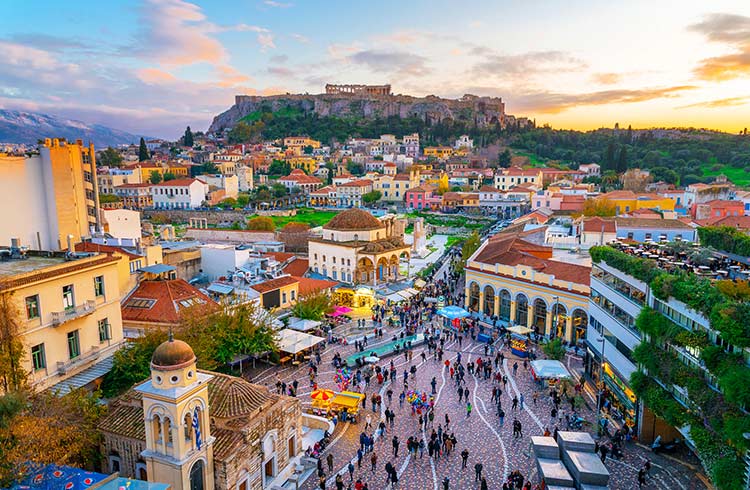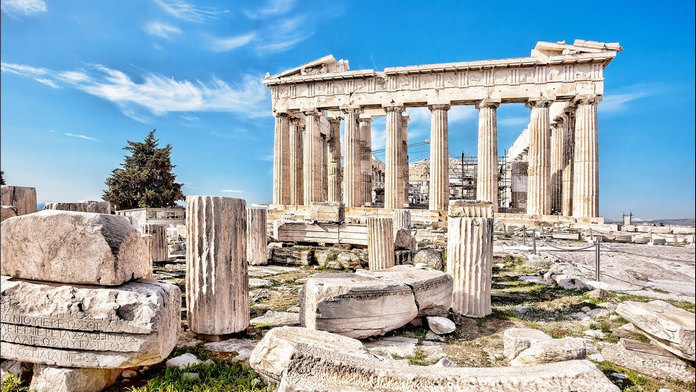Apart from the Parthenon, which made Athens famous all over the world, the city boasts other buildings just as important, historical sites that marked each in its own way the historical development of Attica.

In the Ancient Agora where the Greek spirit was born and grew to manhood, one can admire a wealth of important monuments, among them the reconstructed Stoa of Attalus, nowadays it houses the Agora Museum containing many important finds from the area of Agora. Crowning the knoll of Agoraios Kolonos is one of the best preserved ancient temples- the Theseum.
The Theseum, or more correctly the temple of Hephaestus, is a peripteral temple like the Parthenon. It was built of Pentelic marble during the time of Pericles and has since had a variety of uses and functions.
East of the Ancient Agora lies the Roman Agora, built in the 1st century BC. It is a walled -off space accessible from Aiolou street. Among its celebrated buildings are the Agoranomion and the Propylon or Gate of Athena Archegetis.

In the area of the Roman Agora is the Tower of the Winds, an octagonal tower built by the astronomer Andronicus of Cyrrhus and therefore more correctly known as Horologion of Andronicus Cyrrhestes, or temple of Aeolus.
The tower, built of marble with a pyramidal roof, incorporated a sundial, weathervane and water clock. The frieze of figures in relief representing the winds and the iron bars incised with lines which showed the time when the sun was not shining harks back to times when the human intellect was taking great strides, without the luxury of modern technologies and preparing the way for present day scientific achievements.
Another important building in the same area is the Library of Hadrian, described as an “immense square” with strong lofty walls. Southwest of ancient Athens the celebrated Hill of the Nymphs rises to a height of 147m. It derives its name from a dedication carved on a rock which may indicate that it was once the site of a shrine to the nymphs. On the top of the hill stands the National Observatory dating from 1842.

Northwest of the Acropolis lies the Areopagus, site of the grove where the Council of the Areopagus, the oldest political body of the Athenians, met.
Opposite the Acropolis stands the tree-clad Hill of Philopappus, which owes its name to the funeral monument built in AD 119 in the honor of Philopappus, a Syrian prince who became a Roman consul and a citizen of Athens.
Also known as the Mouseion, the hill may have been the site of the shrine of the Muses. Apart from the monument, the hill offers a splendid view of the Acropolis and the Saronic gulf.





